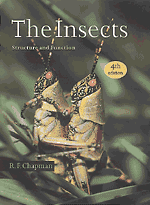Book contents
- Frontmatter
- Contents
- Preface
- Acknowledgments
- PART I The Head, Ingestion, Utilization and Distribution of Food
- 1 Head
- 2 Mouthparts and feeding
- 3 Alimentary canal, digestion and absorption
- 4 Nutrition
- 5 Circulatory system, blood and immune systems
- 6 Fat body
- PART II The Thorax and Locomotion
- PART III The Abdomen, Reproduction and Development
- PART IV The Integument, Gas Exchange and Homeostasis
- PART V Communication
- Taxonomic index
- Subject index
6 - Fat body
Published online by Cambridge University Press: 05 June 2012
- Frontmatter
- Contents
- Preface
- Acknowledgments
- PART I The Head, Ingestion, Utilization and Distribution of Food
- 1 Head
- 2 Mouthparts and feeding
- 3 Alimentary canal, digestion and absorption
- 4 Nutrition
- 5 Circulatory system, blood and immune systems
- 6 Fat body
- PART II The Thorax and Locomotion
- PART III The Abdomen, Reproduction and Development
- PART IV The Integument, Gas Exchange and Homeostasis
- PART V Communication
- Taxonomic index
- Subject index
Summary
The insect fat body is the principal organ of intermediary metabolism. Most hemolymph proteins are synthesized in the fat body, and it also functions in the storage of proteins, lipids and carbohydrates. It consists of thin sheets or ribbons, usually only one or two cells thick, or of small nodules suspended in the hemocoel by connective tissue and tracheae. All the cells are consequently in immediate contact with the hemolymph, facilitating the exchange of metabolites. There is generally a peripheral, or parietal, fat body layer immediately beneath the body wall, and often a perivisceral layer surrounding the alimentary canal can also be distinguished (Fig. 6.1). The fat body is most conspicuous in the abdomen, but components extend into the thorax and head, and insinuate around the other tissues. Within a species, the arrangement is more or less constant, but there are considerable differences between insects in different orders. In hemimetabolous insects, the larval fat body persists in the adult without major changes, but in holometabolous insects the fat body is completely rebuilt at metamorphosis. In most cases this involves rebuilding a new structure from existing fat body cells following histolysis of the larval tissue, but in some adult Diptera it may be developed de novo (section 15.3.2.2).
- Type
- Chapter
- Information
- The InsectsStructure and Function, pp. 132 - 141Publisher: Cambridge University PressPrint publication year: 1998
- 1
- Cited by



